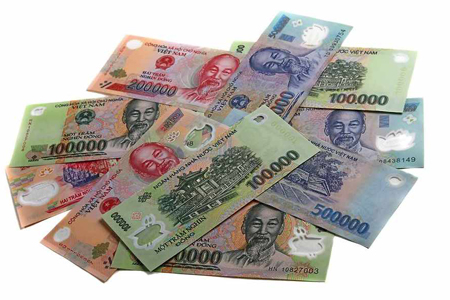Throughout thousands of years of history, each Vietnamese dynasty often issued its own currency including bronze coin, zinc coin and iron coin. The Ho Dynasty was the first dynasty to issue Vietnamese banknote (1936). Since May 3, 1978, Vietnamese Dong (VND) issued by the State Bank of Vietnam has been the currency of Vietnam. Currently, Vietnam's monetary system consists of 2 types: banknote and polymer note that you have to pay attention before hopping on Vietnam shore excursions.
To be more specific, banknotes have 4 denominations: 5,000 VND, 2,000 VND, 1,000 VND, 500 VND and polymer notes include 6 denominations: 500,000 VND, 200,000 VND, 100,000 VND, 50,000 VND, 20,000 VND, 10,000 VND with various depictions. The front side includes the images of President Ho Chi Minh and national emblem, the title "The Socialist Republic of Vietnam", the series number and the par value of the banknote. The back side contains the par value of the banknote and a Vietnamese typical symbol.
Banknotes:
500 VND (pink): Ho Chi Minh President (observe) and Haiphong port (reverse)
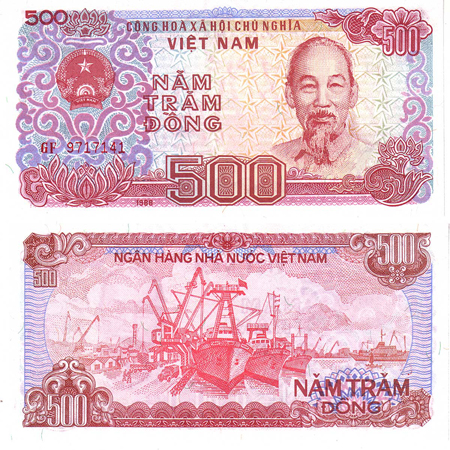
1,000 VND (multicolor on lime background): Ho Chi Minh President (obverse) and lumber productions (reverse)
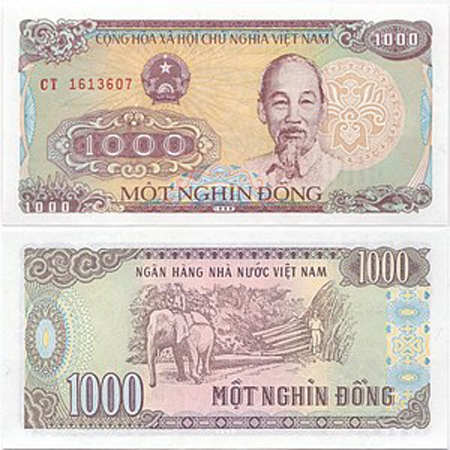
2,000 VND (multicolor): Ho Chi Minh President (obverse) and textile factory (reverse)
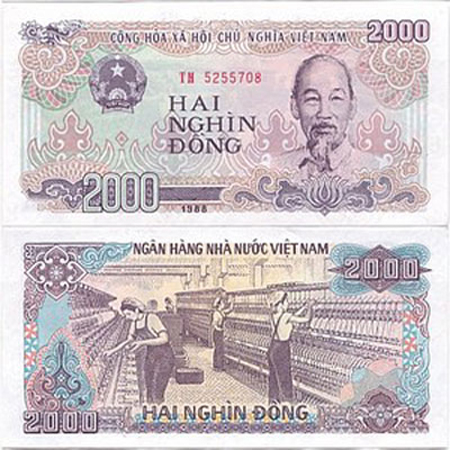
5,000 VND (blue): Ho Chi Minh President (obverse) and Tri An hydropower plant (reverse)
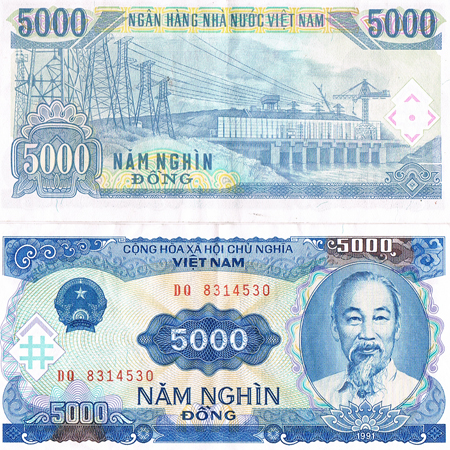
Polymer notes:
10,000 VND (Dark brown on greenish yellow): Ho Chi Minh President (obverse) and offshore platform (reverse)
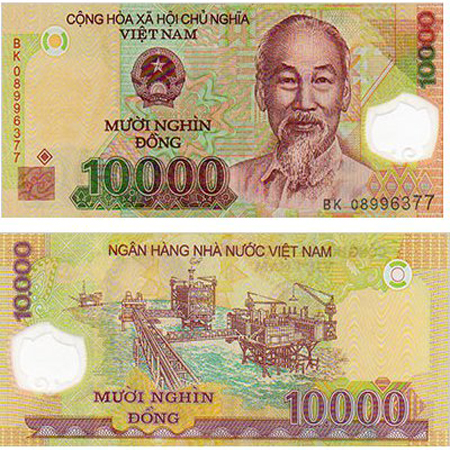
20,000 VND (blue): Ho Chi Minh President (obverse) and Covered bridge in Hoi An (reverse)
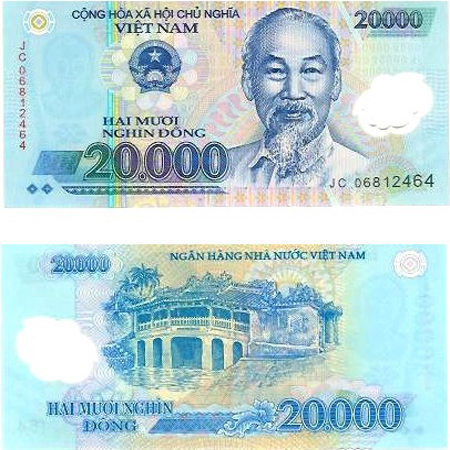
50,000 VND (pink): Ho Chi Minh President (obverse) and Hue (reverse)
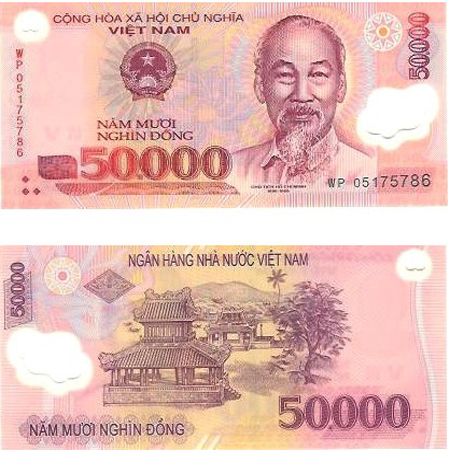
100,000 VND (Yellowish green): Ho Chi Minh President (obverse) and Temple of Literature (reverse)
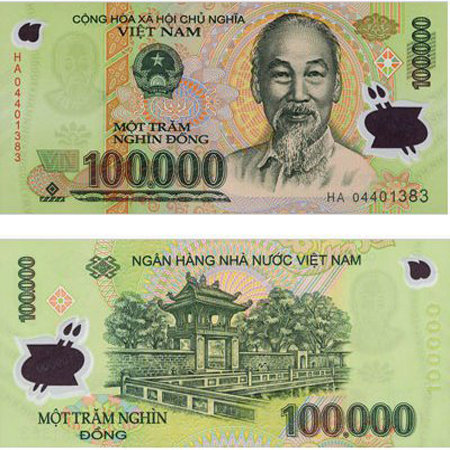
200,000 VND (Brownish-red): Ho Chi Minh President (obverse) and Halong Bay (reverse)
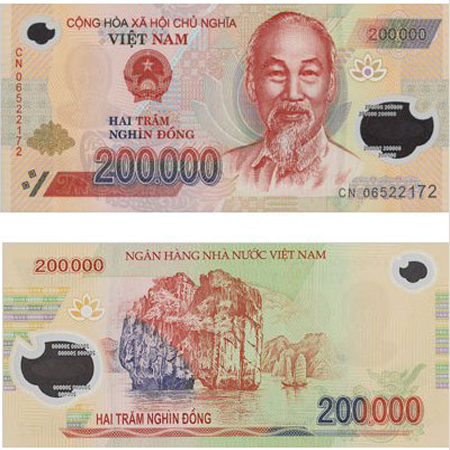
500,000 VND (Cyan-Green): Ho Chi Minh President (obverse) and Ho Chi Minh's birthplace in Kim Lien (reverse)
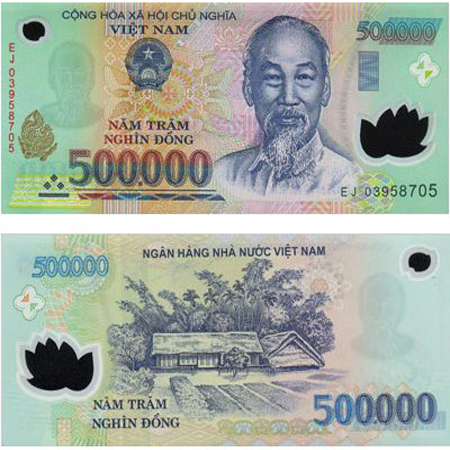
In terms of Vietnamese Dong currency exchange rate, 1 dollar has equaled to 22,300.000 VND (July 29th, 2016). In other words, 1,000 VND has equaled to $ 0.04; 50,000 VND has equaled to $2.24; 100,000 VND has equaled to $4.48.
It is not difficult to distinguish Vietnamese notes. However, do not mistake 20,000 VND for 500,000 VND as they have the same color. Focus on the denominations of the note rather than the images stamped to use money properly. In addition, pay attention to the prices of Vietnamese food and souvenirs prior to making a shore excursion to avoid wasting money. Take a look at the price list below as it would be useful (The price of goods sold for foreigners is usually higher than that for locals due to the payment for rental store).
- A Vietnamese conical hat (non la): 60,000 - 70,000 VND ($2.7)
- Ao dai and its pants: 500,000 – 700000 VND/set ($20 - $30) depending on the material
- A coconut drink: 30,000 - 40,000 VND ($1.5)
- A glass of sugarcane juice: 20,000 - 30,000 ($1.1)
- A bowl of Pho: 40,000 - 50,000 VND ($2)
- A bowl of Hanoi’s tofu pudding: 20,000 - 30,000 ($1.1)
- A bowl of Beef rice vermicelli (Bun Bo Hue): 40,000 - 50,000 VND ($2)
- A lantern (30 – 40 cm): 100,000 – 200,000 VND ($6.7)
- A cast bronze sculpture: 150,000 - 350,000 VND ($6.7 – $15.7) depending on the dimensions

